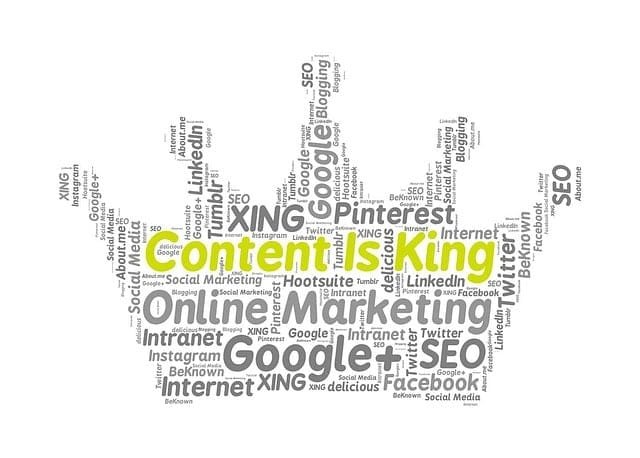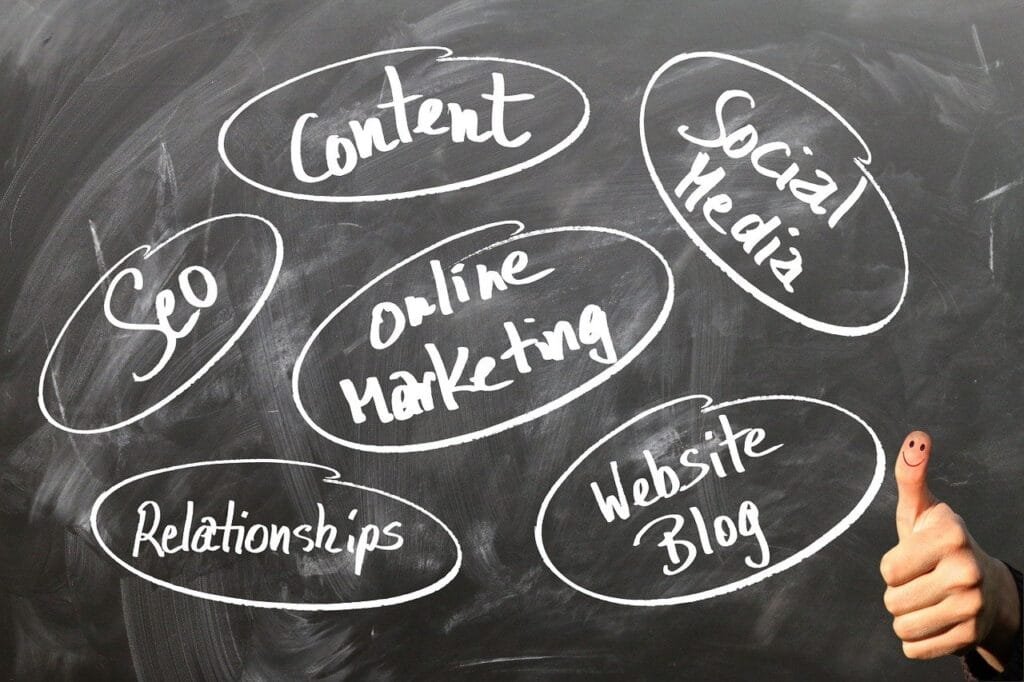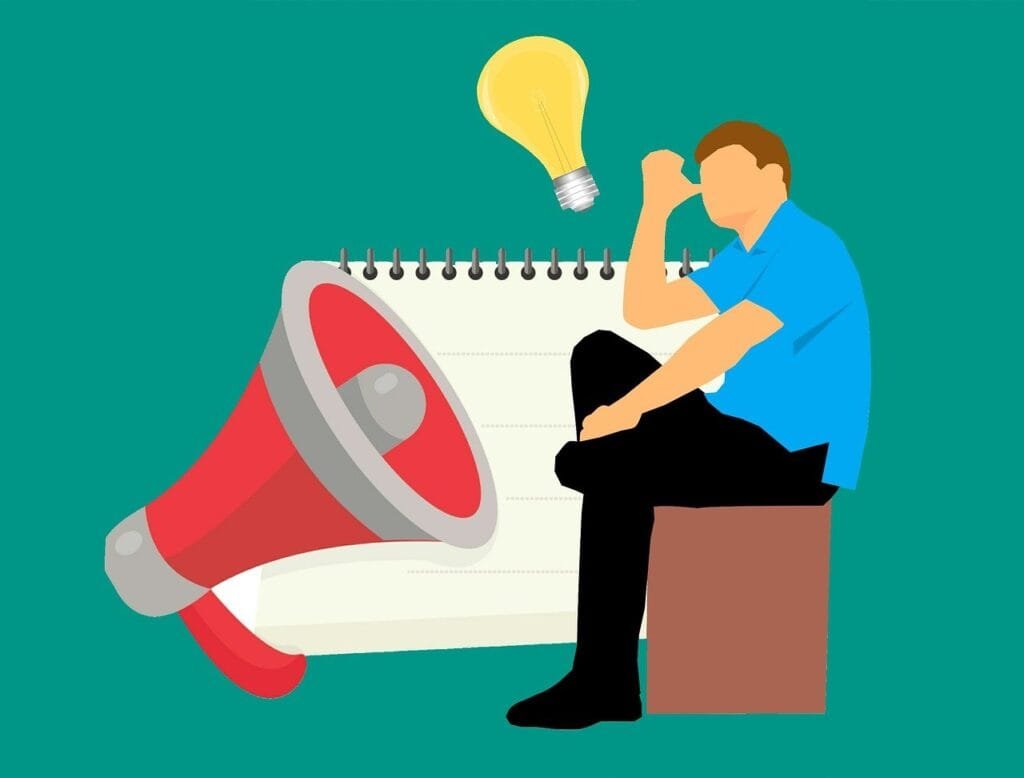In the ever-evolving world of digital marketing, brands are constantly striving to outdo one another, aiming to captivate their target audience with content that resonates, engages, and compels action. As we pull back the curtain to peer into the mechanisms that drive the successes of leading brands, a common narrative unfolds – the strategic, creative, and dynamic application of content marketing. But what sets these front-runners apart? What alchemy of art and science propels their content strategy to generate increased engagement, build trust, and drive conversions? In this deep dive, we’ll explore the hidden gears, levers, and pulleys that top brands deploy to elevate their content marketing, unveiling practical insights that can be leveraged to replicate their success.
The Strategy Blueprint
Audience-Centric Content
Top brands have a secret, and it’s called audience-centric content. They’re not just creating content; they’re crafting experiences. Every blog post, video, and infographic is intricately designed to resonate with the specific desires, pain points, and aspirations of their target audience.
Data-Driven Insights
They’re not guessing; they’re knowing. With a powerful arsenal of data analytics at their disposal, these brands are continuously tuning into the dynamic pulses of audience behaviors, preferences, and interactions to tailor content that doesn’t just attract but magnetizes the audience.

As a travel blogger and the CEO of Miss Tourist, a platform that engages 400,000 users monthly, I’ve had extensive firsthand experience with branded content marketing, especially in the burgeoning travel industry.
Truthfully, I find it to be highly effective when implemented correctly. For instance, we collaborated with a well-known global luggage brand for a targeted blog post which ended up driving a 15% surge in our site traffic and a significant increase in their product sales.
However, I believe the real potential of branded content marketing lies in authenticity and creating emotional engagement. Branded content shouldn’t feel like an intrusion, instead, it should align seamlessly into the user experience.
One way this can be achieved is by partnering with brands whose values and mission resonate with your audience. Another effective strategy that can be optimized is leveraging stories and user-generated content rather than blatantly promoting a product.
In my experience with managing remote teams, I’ve witnessed how the power of shared personal narratives can drive engagement better than outright promotional content.
Yulia Saf, Miss Tourist.
Content Creation Mastery
Storytelling Excellence
Top brands are master storytellers. Every piece of content weaves a narrative, and it’s not by accident but design. These brands invest in understanding the emotional and psychological triggers of their audience. They employ elements of storytelling to craft content that doesn’t just inform but connects, resonates, and stays with the reader long after they’ve left the page.
Visual Integration
We live in a visual world, and top brands know this all too well. Visual integration isn’t about adding attractive images; it’s about complementing the narrative, enhancing understanding, and making content digestible and engaging. The visual elements are strategically placed to guide the reader through the content, making complex or dense information accessible.
Engagement Amplification
Interactive Elements
Top brands transform content from a monologue to a dialogue. The integration of interactive elements like polls, quizzes, and comments turns passive readers into active participants. These elements are not randomly placed but are strategically integrated to occur at points in the content where engagement is most likely to dip, effectively recapturing and sustaining audience interest.
Personalization
Personalization is the silent force powering the engagement engines of top brands. Content isn’t one-size-fits-all but is meticulously tailored, utilizing data insights to offer personalized experiences that resonate with individual audience preferences, behaviors, and interactions.

I’ve seen branded content marketing dramatically enhance customer engagement in the e-commerce sector. As the CEO of DealA.com, a leading coupon platform, I have seen how compelling, branded stories can create a deeper connection with our audience.
When we used more personalised, branded content, our site’s visitor engagement increased by 35%. Notably, a campaign for the Thanksgiving season last year leveraged a unique narrative around savings and holidays, resulting in a 40% rise in user interactions compared to previous campaigns.
While branded content marketing is highly potent, it can be further improved. A brand can interact more humanely with its audience by understanding their concerns and values.
Integration of AI and data analysis tools can help determine consumer behaviour, tailoring personalised narratives that resonate with them, leading to a better ROI on campaigns. But remember, authenticity is paramount in branded content marketing, and it’s essential not to over-commercialize the narrative.
Oleg Segal, Founder and CEO of DealA.com
Distribution Dynamics
Multi-Channel Approach
Top brands don’t limit their content to a single platform or medium. They strategically disperse it across multiple channels to reach their audience where they are. It’s not about casting the net wide but about strategically placing content on platforms where their target audience is most active and engaged.
User-Generated Content
Embracing and promoting user-generated content is another ace up the sleeves of top brands. It’s about turning customers into brand ambassadors, where every piece of user-generated content amplifies authenticity, trust, and engagement.
Metrics and Optimization
Real-Time Analytics
In the pulse of dynamic content, real-time analytics offer top brands a live wire into audience engagement, behavior, and interaction. Every click, share, and comment is analyzed in real-time to refine content strategy, ensuring it’s always aligned with audience expectations and market trends.
A/B Testing
A/B testing is not an option but a ritual for top brands. Every headline, image, and CTA is rigorously tested to identify the combinations that maximize engagement, clicks, and conversions. It’s a scientific approach to content optimization, where decisions are data-driven, not intuitive.
Content Innovation
Emerging Technologies
Top brands are always on the frontline of integrating emerging technologies into their content strategy. Augmented reality (AR), virtual reality (VR), and artificial intelligence (AI) are not buzzwords but integral components that elevate content engagement to immersive experiences.
Adaptive Content
Content adaptability is a hallmark of leading brands. Content isn’t static but adaptive, morphing in real-time to resonate with the dynamic shifts in audience behavior, preferences, and market trends. It’s a pivot from predictive to adaptive content creation.

As the founder, of Or & Zon which operates in the niche luxury handcrafted goods market, I’ve had extensive first-hand experience with branded content marketing.
Done effectively, it can hold immense potential for relationship building and storytelling, especially in sectors that value artistry and craftsmanship. One of our most effective campaigns included bespoke blog posts and videos, showcasing the stories of our global artisans.
This not only highlighted the uniqueness of our products but also fostered a deeper connection by humanizing the brand. However, I believe there are always opportunities for improvement.
Key among them is adopting a more customer-centric approach – content should answer customers’ needs and curiosities. Secondly, while uniqueness is valuable, consistency in branding across content platforms is paramount.
Finally, leveraging new technologies and analytics tools can help enhance personalization and measure effectiveness. By observing these principles, our artisan narratives campaign led to a 35% increase in customer engagement and an improved overall brand perception.
Guillaume Drew, Founder & CEO of Or & Zon
Community Building
Engaging Communities
Top brands don’t just build audiences but communities. Content becomes a catalyst for conversation, interaction, and community building. Every comment, like, and share is an opportunity to foster relationships, build trust, and turn transient audience members into loyal community members.
Social Listening
Social listening isn’t reactive but proactive. Top brands utilize advanced social listening tools to tune into the silent and vocal feedback of the audience. It’s an intricate dance of listening, analyzing, and adapting content to echo the audience’s dynamic pulse.
Content Lifecycle Management
Evergreen Content
Top brands have mastered the art of creating content that stands the test of time. Evergreen content isn’t just relevant today but is designed to continue attracting and engaging audiences over time. It’s a strategic move to ensure the brand remains in the audience’s consciousness, creating a perpetual engagement loop.
Content Refresh
In the dynamic content landscape, top brands ensure that their content is not just created but maintained. Regular updates, additions, and refinements ensure content remains fresh, relevant, and engaging, aligning with the evolving audience expectations and market trends.
User Experience (UX) Enhancement
Seamless Navigation
Top brands ensure their content is housed in a space where navigation is intuitive, seamless, and user-friendly. Every element, from layout to design and navigation, is meticulously crafted to enhance user experience, ensuring content consumption is a pleasure, not a chore.
Mobile Responsiveness
In a world where mobile is king, top brands ensure their content is not just viewable but optimized for mobile devices. It’s a strategic pivot to ensure content is accessible, engaging, and shareable, meeting the audience where they are.

Having led some of the most pivotal branded content marketing campaigns for high-profile clients like IMF and NASA, I strongly see the potential for this marketing approach.
Branded content marketing is truly transformational as it seamlessly amalgamates a brand’s essence into engaging content, which makes an authentic connection with the audience.
To illustrate, we once worked on a project for Northwestern University bursting with compelling stories about research leaps, exceptional students, and notable alumni. By crafting this rich content, we improved campus engagement, increased online visibility and fostered a stronger sense of community.
However, the real power of branded content marketing lies in constant evolution. A strategy that worked months ago might not click today due to rapidly changing consumer preferences and platforms.
It’s crucial to keep exploring new content formats like interactive videos, podcasts, and AR/VR experiences to stay ahead. In terms of improvements, I believe data deep-dives to understand your audience are non-negotiable for delivering personalized content that resonates, along with a keen focus on optimizing content for SEO and mobile platforms that can bolster reach.
Branded content marketing is a marathon, not a sprint, and with the right mix of innovation, personalization, and perseverance, the long-term returns are truly rewarding.
Gabriel Shaoolian, Founder and CEO at Digital Silk

Related: Check out our free SEO suite

Content Measurement and Analysis
KPI Alignment
The measurement isn’t an afterthought for top brands but is woven into the content creation process. Each content piece is aligned with Key Performance Indicators (KPIs) to ensure that engagement, reach, and conversion can be measured, analyzed, and optimized.
Data-Driven Decisions
Decisions are not intuitive but data-driven. By meticulously analyzing content performance data, top brands ensure that content strategies are not static but dynamic, evolving in real-time to maximize engagement and ROI.
Content Personalization
Behavioral Insights
It’s where science meets art. Top brands are not just curating content but are sculpting it based on behavioral insights. Every click, interaction, and engagement is a brush stroke, painting a detailed portrait of the audience to tailor content that’s not just personalized but hyper-personalized.
AI and Machine Learning
AI and Machine Learning aren’t futuristic but current, integral components of content personalization. They’re the silent engines that analyze vast arrays of data to offer insights not just into what the audience wants but predicts what they’ll want next.
Content Integration
Cross-Platform Consistency
In the diverse digital landscape, consistency is king. Top brands ensure content resonates, aligns, and engages across platforms. It’s not about replication but adaptation, ensuring content is tailored to fit the unique dynamics of each platform while maintaining brand consistency.
Omnichannel Experience
It’s where the content journey becomes immersive. Top brands are creating omnichannel content experiences where offline and online content narratives are not isolated but integrated, offering the audience a seamless, consistent, and immersive content journey.

As Head of Inbound Growth at Businessmap, I’ve gained considerable experience in branded content marketing. I concur that branded content marketing is a potent tool for any business looking to establish their brand identity, authority, and trust with their customers.
However, executing it effectively is often the real challenge. If I may share a hands-on experience, a couple of years back, we launched a campaign ‘Map Your Growth’ at Businessmap.
The campaign incorporated blog posts, webinars, and social media content showcasing our clients’ growth stories alongside our solutions. The results were substantial, with a 35% increase in engagement and over a 20% boost in lead conversion rate.
In my opinion, branded content marketing can be improved by prioritising authenticity and relevance over overt promotion. Telling relatable stories and providing value to the audience should be at the heart of our strategy.
Regular analysis of engagement metrics can also provide insights we need to tweak our strategies for better results.
Gabriel Lukov, Head of Inbound Growth of Businessmap
User Experience Optimization
Intuitive Design
We’re stepping into a realm where content and design are inseparable allies. For top brands, intuitive design isn’t an aesthetic choice but a strategic decision to enhance content discoverability, consumption, and engagement. Every element, color, and layout is meticulously chosen to ensure content isn’t just viewed but experienced.
Mobile-First Content
In the era where mobile devices are as ubiquitous as the air we breathe, top brands are adopting a mobile-first approach. Content isn’t just responsive but is crafted with the mobile user in mind, ensuring engagement, shareability, and action are optimized for smaller screens.
Content Analytics and Insights
Actionable Analytics
Data isn’t just collected but dissected. Top brands are turning analytics into actionable insights, where every number, graph, and statistic is a pathway to refine content strategy, enhance engagement, and optimize ROI.
Predictive Analytics
We’re stepping into a future where content strategy is not just responsive but predictive. By leveraging machine learning and AI, top brands are forecasting trends, predicting behaviors, and pre-empting preferences to tailor content that meets the audience in the future.
Audience Engagement Dynamics
Community Engagement
Content isn’t just pushed but pulled. By fostering communities, top brands are turning audiences from passive consumers into active contributors, where content becomes a catalyst for conversation, interaction, and engagement.
Feedback Integration
Top brands are turning feedback from a monologue into a dialogue. Every comment, suggestion, and critique is not just heard but integrated, turning content refinement into a collaborative process with the audience.
Content Diversity
Multimedia Engagement
In the eclectic content landscape, diversity reigns supreme. Top brands are not restrained by text or images but are weaving a colorful tapestry of multimedia content. Videos, podcasts, infographics, and interactive media converge to cater to the diverse consumption preferences of the audience.
Dynamic Content Formats
Adaptability is at the core of content diversity. Each content piece is crafted in multiple formats, ensuring it’s accessible, consumable, and shareable across platforms, devices, and audience segments.
Real-Time Content Adaptation
Live Interactions
The digital world is moving at light speed, and top brands are keeping pace. Live content, real-time interactions, and instant engagements are becoming the norm. Brands are not just content creators but facilitators of live, dynamic, and interactive audience engagements.
AI-Powered Adaptations
Artificial Intelligence is not in the future but the present. Top brands are leveraging AI to adapt content in real-time, ensuring it resonates with the dynamic shifts in audience behavior, preferences, and interactions.

As the Founder of CleanItSupply.com, I understand the utter importance of branded content marketing in driving business growth and enhancing customer engagement.
In my view, branded content is the cornerstone of building a rapport with customers, reinforcing brand positioning and message. To me, its efficacy lies in its ability to humanize the brand, communicate value-addition directly, and foster long-term customer relationships.
One prominent instance of our branded content marketing was our production of over 6,000 product videos under the pseudonym ‘Danny D’. The aim was not just to highlight the features and benefits of products, but to engage and educate customers to make informed decisions.
This campaign resulted in an unprecedented increase in customer inquiries, conversion rates, and overall customer satisfaction. To enhance the effectiveness of branded content marketing, I believe in constant engagement with the audience, leveraging various content formats (articles, blogs, videos, infographics), and maintaining authenticity and transparency.
It requires a deep understanding of your customer persona to provide them relevant, useful, and engaging content consistently. Perspectives like these have helped us maintain our strong cultural values, cater to customer interests, and establish a thriving e-commerce platform.
Dan Dillon, CEO of CleanItSupply.com
Conclusion
In conclusion, the future of content marketing is a blend of innovation, personalization, and ethical business practices. As technology continues to evolve, so does the landscape of content marketing. The brands thriving in this dynamic ecosystem are those that are adaptable, innovative, and committed to delivering unparalleled content experiences. The mantra for success in the ever-evolving world of content marketing is incessant innovation, unyielding commitment to quality, and an unflinching focus on delivering value.
READ NEXT:
- Keyword Research for Startup FAQ Pages: Addressing User Queries
- How to Retarget Your Website Visitors on Facebook
- Why “Content is King” and How to Make Yours Reign Supreme
- The Future of Digital Marketing: Predictions for the Next Decade
- SaaS Content Repurposing: Extending the Reach of Existing Content





















